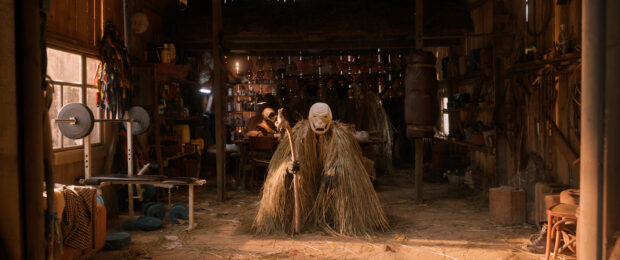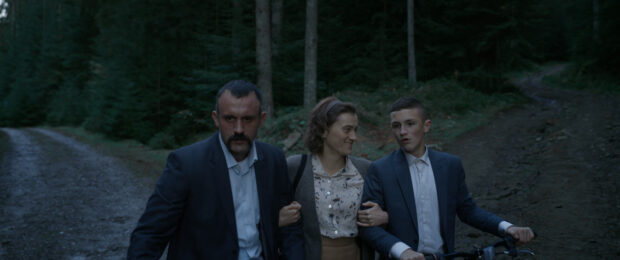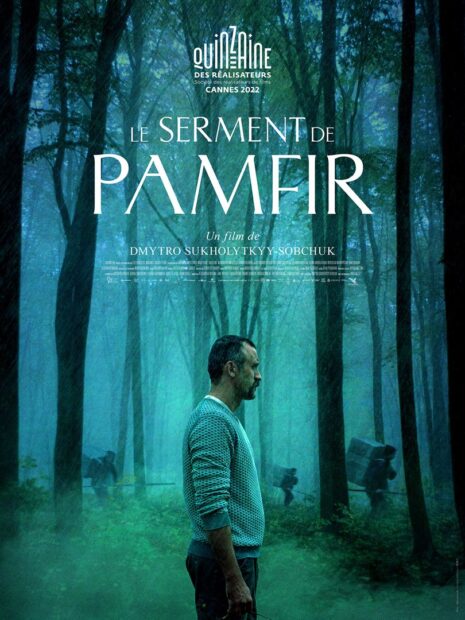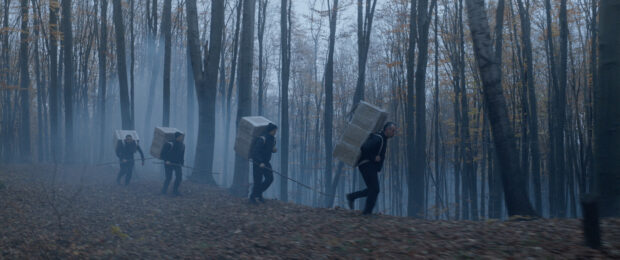Shot well before the start of the war but after the invasion of Crimea, this first film by a Ukrainian director is full of ancient violence passed down by tradition. The strong characters, the difficult family relationships as well as the landscapes are brilliantly filmed in magnificent images. The violence of the men and the madness of the carnival make it a flamboyant film, perhaps even too steroidal.
By Bernard Cassat
A smuggling region near Romania. Photo Condor Distribution
Dmytro Sukholytkyy-Sobchuk is originally from a lost region in the south-east of Ukraine, not far from the Romanian border, in fact multi-ethnic. And that’s where he set his first feature film, in a remote village where the roads are unpaved. Far from the decision-making centers but close to countries that are part of Europe, it is obviously an area conducive to trafficking of all kinds. Smuggling seems to be almost an institution there. And the organized gangs that go with it, close to local mafias.
Tough characters in a wild country
Pamfir, a former smuggler, had made a deal with his wife, a promise to get out of smuggling. To earn honest money, he left alone to work in Poland. He returns to visit when his son Nazar is fifteen years old. And he will find himself caught up in a spiral that forces him to betray his promise and start smuggling again out of need for money to save his honor, but also because he finds himself caught up in the complex relations of rival gangs. The characters are tough in the country, Pamfir the first. He’s a pretty rough man, uneducated. But his knowledge of life, his intelligence and a few principles and rules of life dictate an interesting attitude. In the underdeveloped world of her village (the story could take place in the 19th century), still plagued by beliefs that are both Catholic religious for many women, and shamanic and popular when the carnival takes place, Pamfir wants at all costs that her son becomes better than him, more educated above all, so that he does not have the same life. We learn little by little that he fought a long time ago with his father by gouging out his eye, and that the family is not reconciled. For a history of religion, precisely. And that he has always refused to submit to the will of the small regional bosses.

Carnival costumes. Photo Condor Distribution
A highlight of this rural and backward society, the Malanka, a traditional carnival festival, takes place in the cold of January. The participants have a raffia costume and a mask, often representing an animal. The film ends during its unfolding, which also shows the preparations for this celebration. Hence the magnificent scenes of strange dances, goat or wolf masks in the night, lit by large wood fires that cast incredible light. The forest, nature, animals are also recurring themes of the film. Pamfir, his wife and Nazar take a walk in the forest for a while. And all three begin to howl animal cries to scare away the wild beasts. And on the contrary, the savagery of humans comes out quite quickly, especially during settling of scores by rather trashy beatings. This violence, however social (the hitters obey their leader), seems implacable. Pamfir is one of them reluctantly, but does indeed suffer from this unhealthy influence of clans led by cruel men.

Howl to scare away wild beasts. Photo Condor Distribution
For a first film, Le Serment de Pamfir is frankly flamboyant. Beautiful images of a rural village, very neat lighting in the interiors, meticulous work on the shadows at night and on the bodies lit by candles. With a peak during the carnival, the costumes and masks allowing a kind of paroxysmal madness. The alcohol, the violence, the short and definitive dialogues, the deep roughness of the voices of the men, the screams of pain of the women, the steroids that the smugglers swallow to run faster with their loads, all this refers to a raw masculinity, to the harshness of these mountains and the deep beliefs of these regions. With a few moments of grace, like this heart of teenagers, during the mass, which refers rather to the Greek tragedy whose history is, in fact, not so far away.

“The Oath of Pamfir”: in the harshness of the Ukrainian Carpathians

